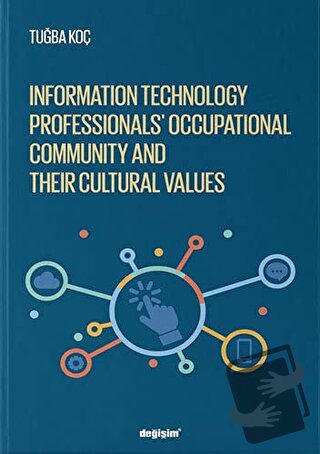Information Technology Professionls’ Occupational Community and Their Cultural Values

Orlikowski and Baroudi (1989) claim that, conducting researches about Information System (IS) or Information Technology (IT)1 occupation is critical for various reasons. First, IT employees generally performance in the sector with rapid developments which exponentially grows year by year. Second, IS workers have a significant influence on other organizational practices which shapes the way that other employees do their businesses. Third, IT profession can be considered more technical and the department itself cannot locate under the main business functions; yet, all the critical processes undeniably depend on information technology (Lamb & Kling, 2003). Studies about Information Technology (IT) professionals2 have generally focused on three issues: (1) differences between IT people and the others, (2) how IT deals with different task assignments, and (3) high labor turnovers (Niederman, 1993); however, the first issue is still in its nascent especially regarding with empirical researches. Indeed, Leidner and Kayworth (2006) insist on conducting more empirical researches in order to understand IT occupational culture and its impacts because cultural studies in IS have generally focused on two levels of analysis: national culture and organizational culture.
| Taksit Sayısı | Taksit tutarı | Genel Toplam |
|---|---|---|
| Tek Çekim | 200,70 | 200,70 |
| 3 | 73,11 | 219,32 |
| 6 | 38,60 | 231,59 |
| 9 | 27,10 | 243,87 |
| 12 | 21,34 | 256,11 |
| Taksit Sayısı | Taksit tutarı | Genel Toplam |
|---|---|---|
| Tek Çekim | 200,70 | 200,70 |
| 3 | 73,11 | 219,32 |
| 6 | 38,60 | 231,59 |
| 9 | 27,10 | 243,87 |
| 12 | 21,34 | 256,11 |
| Taksit Sayısı | Taksit tutarı | Genel Toplam |
|---|---|---|
| Tek Çekim | 200,70 | 200,70 |
| 3 | 73,11 | 219,32 |
| 6 | 38,60 | 231,59 |
| 9 | 27,10 | 243,87 |
| 12 | 21,34 | 256,11 |
| Taksit Sayısı | Taksit tutarı | Genel Toplam |
|---|---|---|
| Tek Çekim | 200,70 | 200,70 |
| 3 | 73,11 | 219,32 |
| 6 | 38,60 | 231,59 |
| 9 | 27,10 | 243,87 |
| 12 | 21,34 | 256,11 |
| Taksit Sayısı | Taksit tutarı | Genel Toplam |
|---|---|---|
| Tek Çekim | 200,70 | 200,70 |
| 3 | 73,11 | 219,32 |
| 6 | 38,60 | 231,59 |
| 9 | 27,10 | 243,87 |
| 12 | 21,34 | 256,11 |
| Taksit Sayısı | Taksit tutarı | Genel Toplam |
|---|---|---|
| Tek Çekim | 200,70 | 200,70 |
| 3 | 73,11 | 219,32 |
| 6 | 38,60 | 231,59 |
| 9 | 27,10 | 243,87 |
| 12 | 21,34 | 256,11 |
| Taksit Sayısı | Taksit tutarı | Genel Toplam |
|---|---|---|
| Tek Çekim | 200,70 | 200,70 |
| 3 | - | - |
| 6 | - | - |
| 9 | - | - |
| 12 | - | - |
Orlikowski and Baroudi (1989) claim that, conducting researches about Information System (IS) or Information Technology (IT)1 occupation is critical for various reasons. First, IT employees generally performance in the sector with rapid developments which exponentially grows year by year. Second, IS workers have a significant influence on other organizational practices which shapes the way that other employees do their businesses. Third, IT profession can be considered more technical and the department itself cannot locate under the main business functions; yet, all the critical processes undeniably depend on information technology (Lamb & Kling, 2003). Studies about Information Technology (IT) professionals2 have generally focused on three issues: (1) differences between IT people and the others, (2) how IT deals with different task assignments, and (3) high labor turnovers (Niederman, 1993); however, the first issue is still in its nascent especially regarding with empirical researches. Indeed, Leidner and Kayworth (2006) insist on conducting more empirical researches in order to understand IT occupational culture and its impacts because cultural studies in IS have generally focused on two levels of analysis: national culture and organizational culture.










